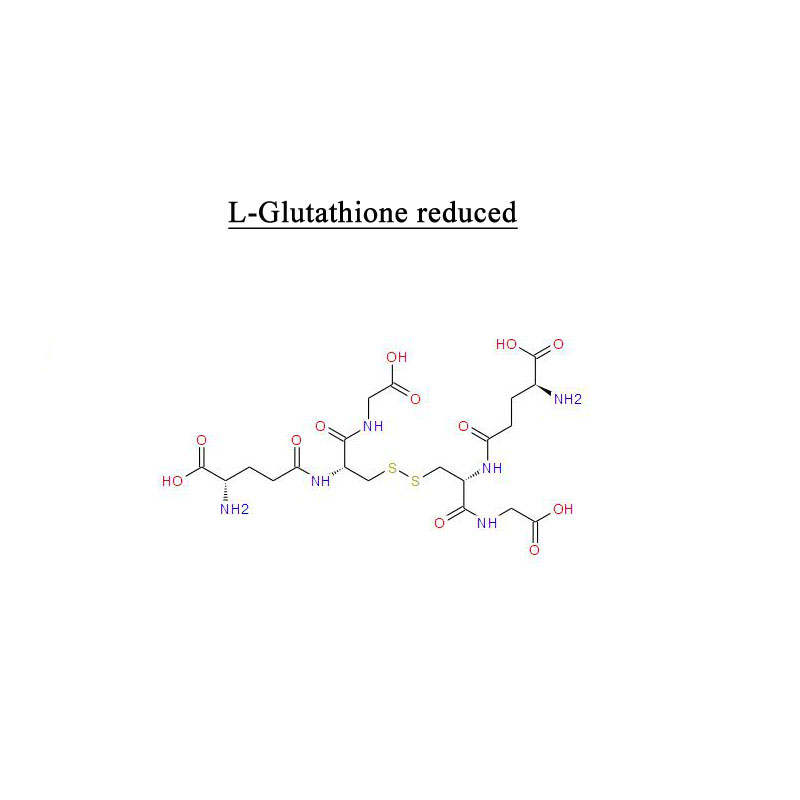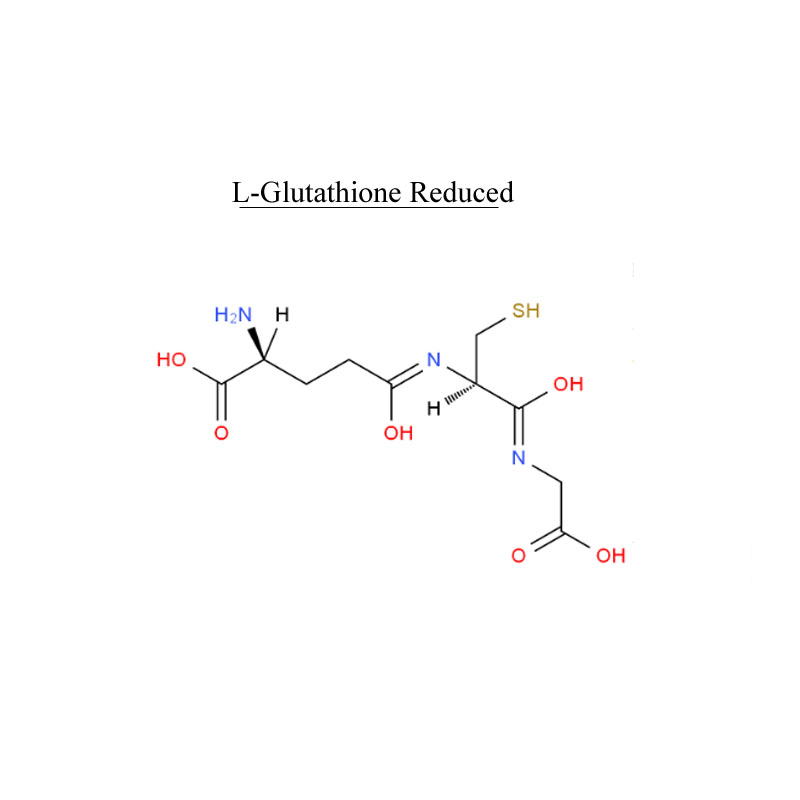L-Glutathione Reduced 70-18-8 Antioxidant
Payment: T/T, L/C
Product Origin: China
Shipping Port: Beijing/Shanghai/Hangzhou
Order (MOQ): 1kg
Lead Time: 3 working days
Production capacity: 1000kg/month
Storage condition: Stored in cool, dry place, room temperature.
Package material: drum
Package size: 1kg/drum, 5kg/drum, 10kg/drum, 25kg/drum

Introduction
L-Glutathione (GSH) reduced has been used in the elution buffer to elute GST (glutathione S-transferase)-fused proteins using glutathione-agarose beads. It has been used to prepare a standard curve for GSH analyses.
May be used at 5-10 mM to elute glutathione S-transferase (GST) from glutathione agarose.
Glutathione is an antioxidant produced in cells. It’s comprised largely of three amino acids: glutamine, glycine, and cysteine.
Glutathione levels in the body may be reduced by a number of factors, including poor nutrition, environmental toxins, and stress. Its levels also decline with age.
In addition to being produced naturally by the body, glutathione can be given intravenously, topically, or as an inhalant. It’s also available as an oral supplement in capsule and liquid form. However, oral ingestion of glutathione may not be as effectiveTrusted Source as intravenous delivery for some conditions.
Glutathione Benefits
1. Reduces oxidative stress
2. May improve psoriasis
3. Reduces cell damage in alcoholic and nonalcoholic fatty liver disease
4. Improves insulin resistance in older individuals
5. Increases mobility for people with peripheral artery disease
6. Reduces symptoms of Parkinson’s disease
7. May help fight against autoimmune disease
8. May reduce oxidative damage in children with autism
9. May reduce the impact of uncontrolled diabetes
10. May reduce respiratory disease symptoms
Specification (USP43)
|
Items |
Standards |
|
Appearance |
White or almost white crystalline powder |
|
Appearance of Solution |
Clear and colorless |
|
(10% w/v in water) |
|
|
Bulk Density |
≥0.40g/ml |
|
Tapped Density |
≥0.60g/ml |
|
Mesh Size |
100% thru mesh 80 |
|
Identification |
S.O.R: -15.5°~-17.5° |
|
|
Infrared: Positive |
|
Related Substances |
L-glutathione oxidized ≤1.5% |
|
|
Total impurities ≤2.0% |
|
Assay (dry basis) |
98.0%~101.0% |
|
Loss on Drying (3h at 105℃) |
≤0.5% |
|
Residue on Ignition |
≤0.1% |
|
Ammonium |
≤200ppm |
|
Chloride |
≤200ppm |
|
Sulfate |
≤300ppm |
|
Iron |
≤10ppm |
|
Arsenic |
≤1.0ppm |
|
Cadmium |
≤0.2ppm |
|
Lead |
≤0.5ppm |
|
Mercury |
≤0.3ppm |
|
Heavy Metals |
≤10ppm |
|
Total Plate Count |
≤1000cfu/g |
|
Yeast & Mold |
≤100cfu/g |
|
Coliforms |
Negative/1g |
|
E.Coli |
Negative/10g |
|
Salmonella |
Negative/10g |
|
Staphylococcus Aureus |
Negative/10g |
Specification (EP10)
|
Items |
Standards |
|
Appearance |
White or almost white, crystalline powder or colorless crystals |
|
Solubility |
Freely soluble in water, very slightly soluble in ethanol and in methylene chloride |
|
Identification |
S.O.R.:-15.5°~-17.5° |
|
|
Infrared: Conforms to the Reference Spectrum |
|
Appearance of solution |
Clear and colorless |
|
Specific optical rotation |
-15.5°~-17.5° |
|
Related substances |
-Impurity A (L-cysteinylglycine)≤0.5% |
|
|
-Impurity B (Cysteine)≤0.5% |
|
|
-Impurity C (L-glutathione oxidised)≤1.5% |
|
|
-Impurity D (L-γ-glutamyl-L-cysteine)≤1.0% |
|
|
-Impurity E (Product of degradation)≤0.5% |
|
|
Total Impurities≤2.5% |
|
Chlorides |
≤200ppm |
|
Sulphates |
≤300ppm |
|
Ammonium |
≤200ppm |
|
Iron |
≤10ppm |
|
Heavy Metals |
≤10ppm |
|
Loss on Drying |
≤0.5% |
|
Sulfated ash |
≤0.1% |
|
Bacterial Endotoxin |
≤0.1EU/mg |
|
Assay |
98.0% to 101.0% |








